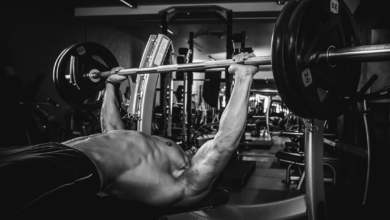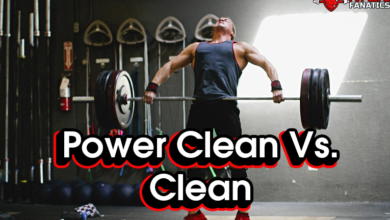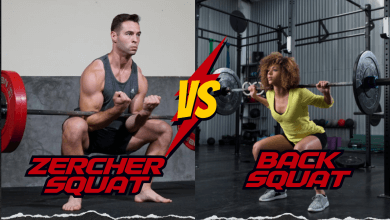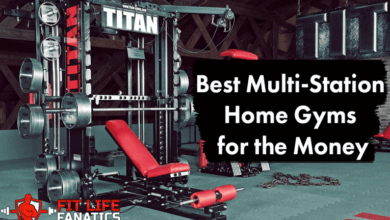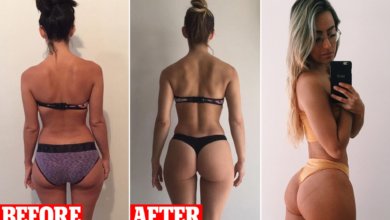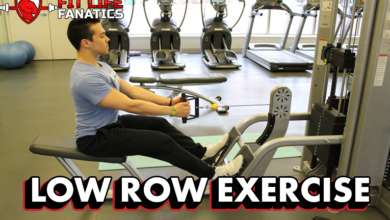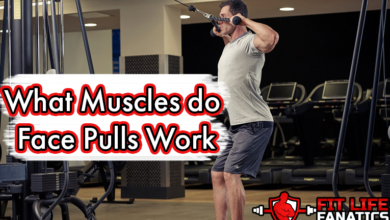How to Build Core Strength from Nothing: My Experience
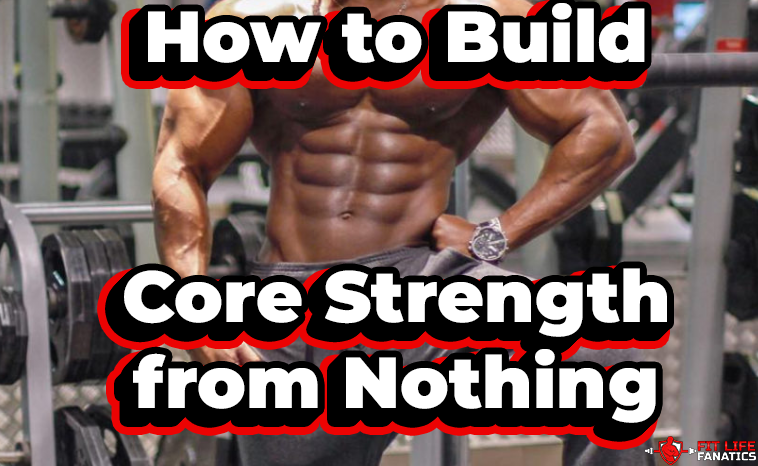
You've probably heard the phrase 'Core Strength' being thrown around loosely in the fitness industry.
'Your squat form is poor cause of your core strength'
'Unable to do clean Australian pull-ups, or several standard pull-ups? Your core is too weak'
It almost makes it sound like core strength is the panacea for all things fitness related. But what exactly does core strength account for?
It's not like you can see your core strength, like you can flaunt your best deadlift, can you?
What is it made of? Is it an actual muscle or group of muscles?
And even more importantly; how do you build core strength, if you are a rank beginner, with zero core strength to begin with?
That's what I am going to talk you through today.
What Is the Core?
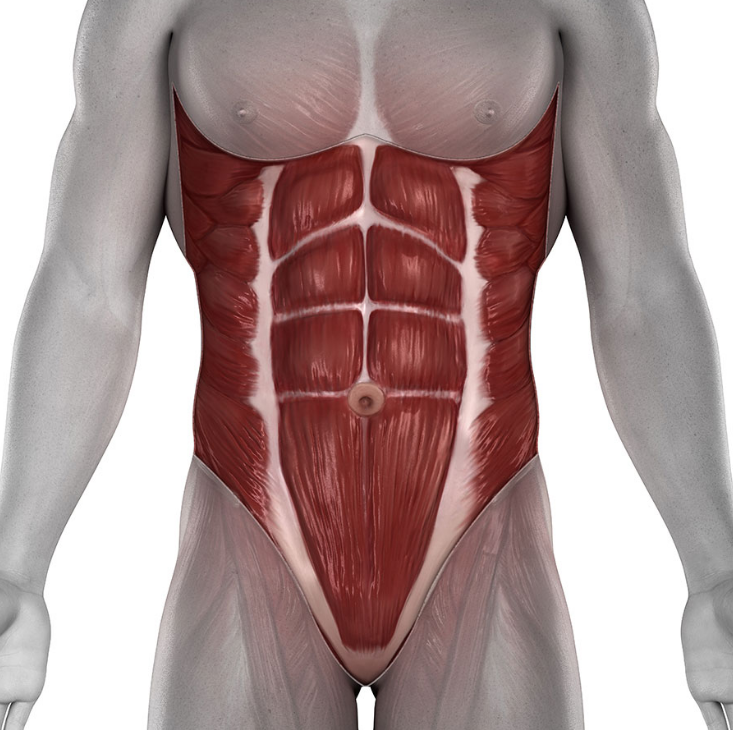
The core is a catchall phrase used to define a group of muscles that connect the upper and lower body, positioned around the torso.
These include -
- The Trapezius which controls your posture
- The Latissimus Dorsi which stabilizes the spine
- The Gluteus Maximus, the terribly underrated muscle in the lower body
- The Rectus and transversus abdominis
- Hip adductors
- The quadratus lumborum, a hidden muscle that maintains the integrity of your lower back
- Spinal erectors that allow you to turn and make quick movements
Together, these muscles are tasked with numerous critical functions, the most important of which is stabilizing your spine.
The spine is the most important part of your body, since it practically holds up your entire body. Think of the core like a secret group of muscles that work behind the scenes to maintain your spinal alignment.
When you want to stand up straight with good posture, or bend down to pick something up, or keep a straight back during the eccentric part of a sumo or goblet squat, it's all due to core muscles.
Having a strong core can manifest in many different ways. The most obvious one is good posture and clean form during compound exercises like hanging leg raises or captain chair workout.
But it's not limited to that.
Core strength is vital for a pain-free functional body.
Some of the most fundamental moves we make on a daily basis are connected to the core muscles.
Is building core strength from nothing possible?

Well, everything is possible in fitness. It's not like every one of us is born with outlier genes or near-perfect postural alignment, is it?
In fact, most of us have poor core strength which is obvious from the statistics about back pain globally. It is estimated that 80% of the population experiences back pain.
That means that there's ample scope for improvement with core strength.
Also, I have noticed that the term 'Core Strength' throws people off. Many athletes that I have spoken to, assume that this is a mountainous task that would be impossible for the layman to achieve.
Thankfully, this is not as hard as it seems.
There are some great exercises that you can start off with, that have a very low entry barrier and are even low impact, making them senior-friendly.
These also make for great home exercises for females looking to lose belly fat and grow tone their core section.
Why is building core strength so essential?
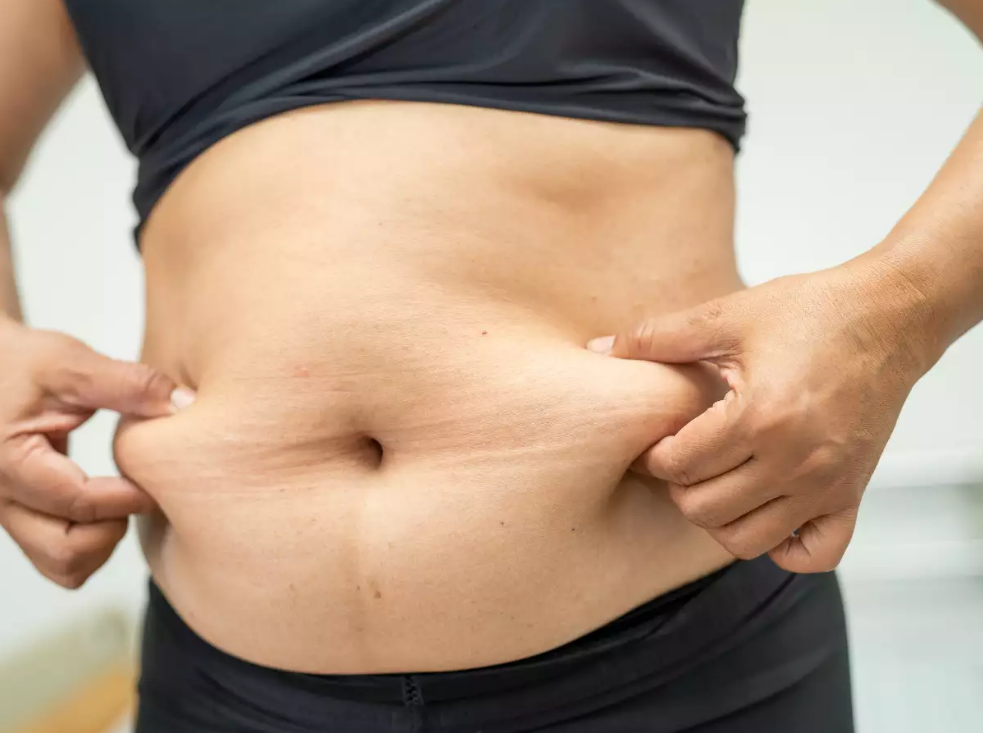
Core Strength is one of the most important physical attributes you can and must develop even if you haven’t yet.
The sedentary lifestyles that we lead are the bane of the modern work culture.
But resting our butts all day on a chair do more harm than expanding our waistline. It also weakens the gluteus maximus, the adductors, the oblique and almost every muscle that we have listed above.
If you are looking at longevity and a pain free life in the sunset years, it is vital that you work towards strengthening your core.
What are the signs that you have a weak core and need to build strength?
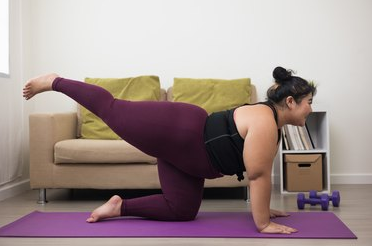
How do you determine that your core is weak? Sure, you have poor form during exercises like the smith machine squats, double crunch or the star plank.
But that can also be limited to lack of experience with squats and does not necessarily have to be a weak core, does it?
If you want to know whether your core is weak, then here are four telltale signs that indicate exactly this.
Poor Balance
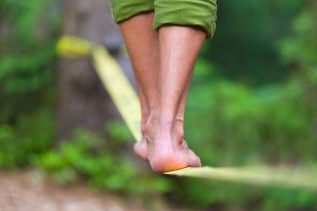
The Core is the body's stabilizer muscle group. It keeps you stable and balanced when you are walking, running or performing any kind of physical activity, including resistance training.
If your core muscles are weak, you might experience poor balance and coordination at times, unless you have been doing shrimp squats and reaping the benefits this exercise offers.
People with poor core strength tend to sway or tilt their torso to the sides while lifting heavy weight, or even when running, especially after another workout, like when running after leg day or so.
Swayback

A swayback is where the butt sticks out too far, making it impossible for you keep a straight waistline, more so when doing squats and deadlifts on the same day - which can be particularly risky.
When you have a weak core, your lumbar spine is often hyper extended. This causes your lower back to round out or protrude forward.
So instead of having a straight body during squats and deadlifts, people with poor core strength will usually squat/deadlift with a swayback because their posterior chain muscles are weak.
Now that's bad news if you are considering doing squats during every workout.
Related Reading; Zercher Deadlift; What Is It, How To Do It, Muscles Worked, Benefits & Drawbacks
Lower back pain
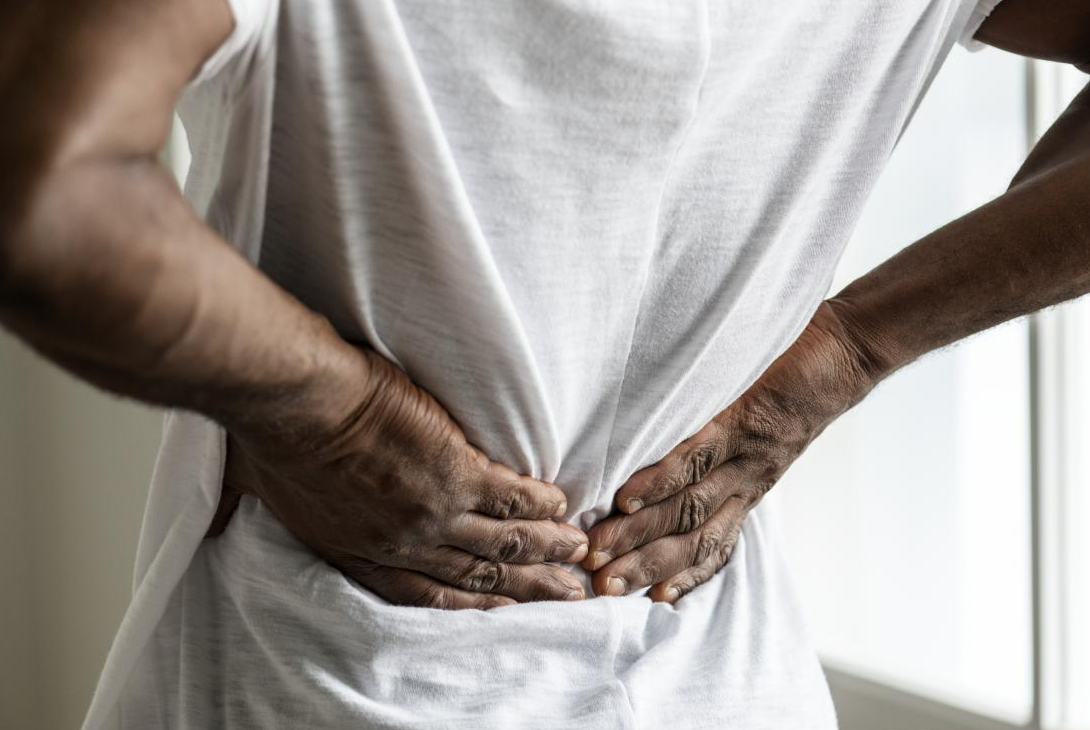
If you have a weak core, it's likely that you will experience lower back pain from time to time. It usually occurs in the mid-30s and 40s after a person loses muscle mass and experiences a weakening of the posterior chain due to a sedentary lifestyle.
But in the modern day, we see guys as young as 30 with poor spinal health and chronic back pain.
Posture

Poor posture, or a slouching back is a classic sign of poor core strength. When the core muscles are weak, the body has to overcompensate by recruiting other muscles in order to maintain proper postural alignment.
This throws the delicate homeostasis out of whack.
Prolonged poor postural health can cause a bevy of problems, including pain in the lower back, neck and shoulders. In severe cases, it can even cause a permanent curvature of the spine.
Best Core Exercises to build strength

All said and done, how do you build score strength if you are a rank beginner? Picture someone who's never stepped into a gym and has led a sedentary lifestyle for the longest time.
The options are quite extensive, from russian twists and its alternatives to doing the right number of crunches a day, a combination of one punch man workout exercises, or standing oblique crunches.
I don't wanna bombard you with details on every core exercise out there.
But I have just the thing for you.
#1 - The Plank

The Plank is the most basic of all core exercises. If you are new to core training, it is the perfect exercise to start with. It works the entire core, including the hip flexors, the oblique and the spinal erectors.
Most importantly, it is very easy to learn and can be performed anywhere without any equipment.
Muscles worked with the plank
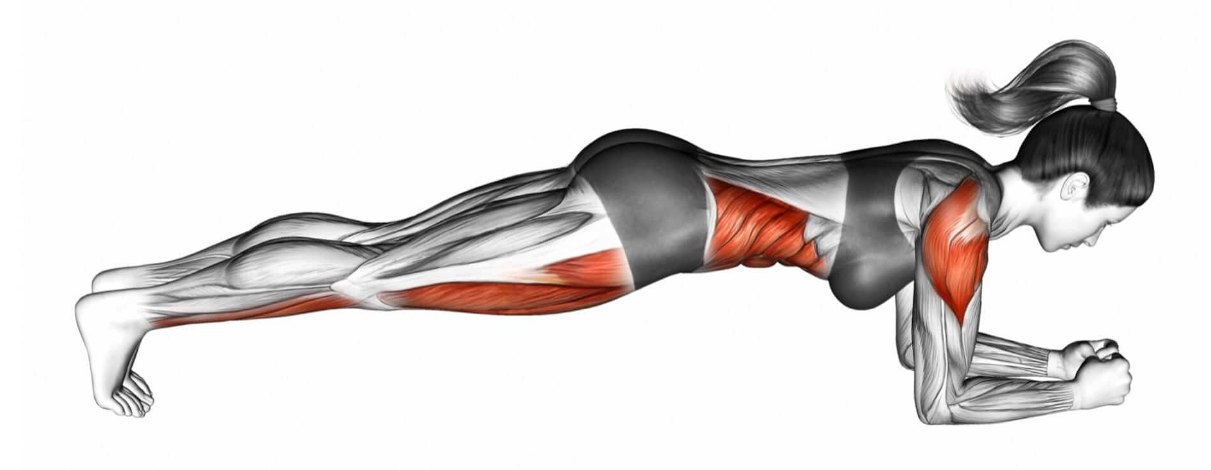
There are numerous versions of the Plank, each one of which targets different muscle groups. But we are going to focus on the regular plank. This version of the plank is a staple in most ab routines.
It targets the following muscles.
Rectus abdominis
The Rectus Abdominis is the muscle that is responsible for giving you a six-pack abs. This is the muscle right above and around your belly button.
Obliques
The Obliques are the muscles that run down diagonally across your waistline. They help in rotating and bending your body, apart from creating an aesthetic appearance.
Gluteus Maximus
The Gluteus Maximus is your largest muscle group and sits right on top of the buttocks. When you perform the Plank, the glutes also contract in order to keep your hips up.
Transverse abdominis
The Transverse Abdominis is the deepest of all core muscles. It lies underneath the rectus abdominis in the abdominal cavity and helps keep in your stomach.
In so doing, it also supports your lower back during exercise movements.
Serratus anterior
The Serratus Anterior is a set of muscles that go from the medial scapula (the bones on the side of your chest) to the top of your ribs. This muscle stabilizes your shoulder blades and keeps them locked in place.
Instructions on how to do the Plank
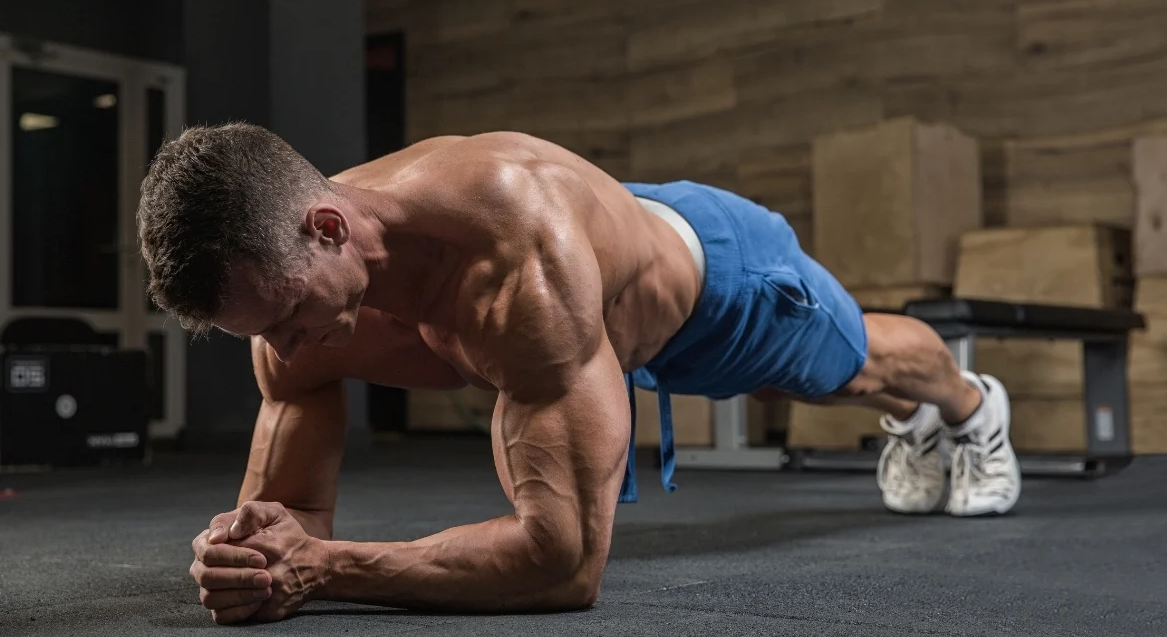
Step 1 - Lie face down with your forearms and palms flat on the ground.
Step 2 - Engage your entire core and lift yourself up from the ground by balancing on your forearms and toes.
Step 3 - Your arms should be shoulder width apart from each other with a 90-degree bend in your elbows.
Step 4 - Keep your back straight by squeezing those glutes, tighten those abs and make sure you squeeze the air out of your abdomen by pulling your belly button back towards your spine.
Step 5 - Hold the position until you can no longer hold on because of the tension. Rest, repeat.
Pro Tip
To nail the plank with good form, it is imperative to squeeze the lower back muscles, the glutes and the abs.
Another mistake that many people make is arching their upper body instead of tucking in their stomachs.
Suggested Reps
The Plank is all about hold duration, rather than number of reps. Ideally, you want to hold the Plank for 1-3 minutes. As a beginner, start with 30 seconds and work your way up.
To build strength quickly, perform 3 sets of max time rather than just doing one long duration at once.
#2 – The Bridge
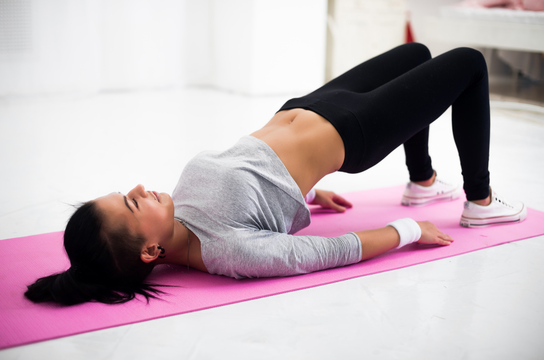
The Bridge is one of the most beneficial bodyweight exercises ever. It helps to target the glutes and is a staple in most rehabilitation routines for lower back pain. That tells you that it is one of the best exercises for core strength.
Muscles worked with Bridge
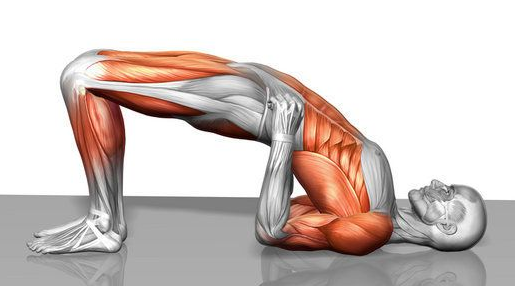
When you perform a bridge, your entire core engages to keep your pelvis from collapsing. It targets almost every single muscle in the torso and your lower body. But here are the most important ones.
The Glutes
The bridge pose and many variations of it, are one of the best exercises to build a strong and round booty. You will squeeze the gluteus maximus to hold your torso in position.
But even the gluteus medius and gluteus minimus will get activated along with the maximus.
Hamstrings
The hamstrings are a group of muscles that go from your hip all the way down to behind your knees. They control bending at the knee, hip extension and movements like running, jumping and kicking.
During the bridge, the hamstrings work in synergy with the glutes to keep you in position.
Rectus Abdominis
The rectus abdominis is the primary core stabilizer that helps prevent your pelvis from hyper extending during the bridge.
Transverse Abdominis
The transverse abdominis is deepest of all core muscles and it wraps around your entire abdomen like a girdle, pulling it inward to protect it.
Instructions on how to perform the bridge
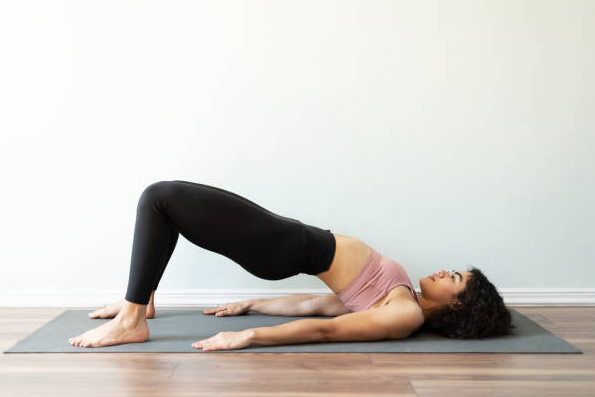
Step 1 - Lie face up on the ground with your knees bent and feet hip-width apart and flat on the floor.
Step 2 - Engage your core by pulling your belly button in towards your spine. Maintain that contraction throughout the exercise.
Step 3 - Push through both of your heels into the ground to lift up your hips, glutes and upper back off the ground.
Step 4 - Squeeze your glutes to lift up your hips as high as you can while maintaining a flat back.
Step 5 - Hold the position without slouching the back or tilting the pelvis. Then slowly return back to the starting position by lowering your hips, glutes and upper back down to lay on the floor.
Pro Tip
Don't hyperextend the back during this exercise. Keep it flat by engaging all of your core muscles along with pushing through both heels into the ground at all times.
Suggested Reps
Just like the plank, performing the bridge pose effectively depends on the hold duration.
But here, you need to work up to holding it for at least 30 seconds before trying for longer than that. Start off with 10 second holds paying all the attention to proper form.
Slowly increase to 30-60 second holds.
When you build strength and endurance, perform 3 sets of 30-second holds each.
Best Core Strengthening Exercises for Seniors
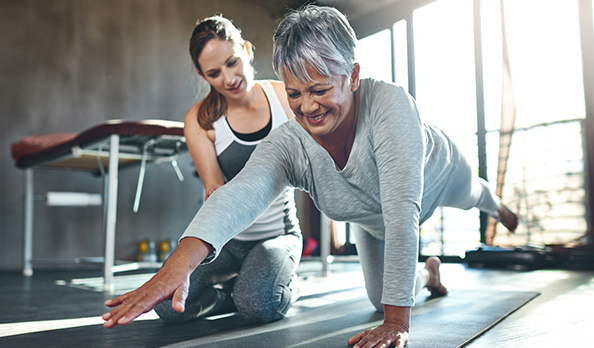
As we age, our core muscles start to deteriorate and weaken. For most people, this process begins in the 30s and progresses more rapidly in the 40s and 50s.
That explains why creating prominent 10 pack abs gets harder as you age, and back pain is so prevalent in seniors.
However, due to chronic lower back pain and lack of muscle fiber pliability, most seniors maybe unable to perform exercises like the plank and bridge.
Don't even mention the more intense ones like the power tower workout or grinding out a whopping 500 push-ups a day that a young turn can pull off effortlessly.
What you need is lower impact core exercises.
We have two options for you.
#1 - Modified Plank
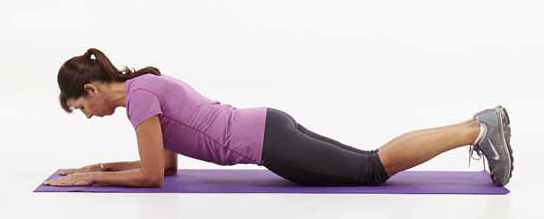
If you lack the core strength needed to support your body weight on your forearms for the plank, you can always try the 'Modified Plank'.
As implied by the name, this is the Plank with a small modification. For this exercise, you need to kneel on the floor instead of resting your weight on your forearms as in the standard plank.
For those with lower back pain or weak core muscles, they should do the modified version as it will protect their back from injuries and give them a decent workout at the same time.
Muscles worked with the modified plank

The modified plank targets the same muscles as the plank does, but reduces the pressure on your lower back. It also takes the glutes out of the action since the knees are resting on the floor.
Here are the primary muscles that it recruits.
Rectus Abdominis
Located in the front of your abdomen, the rectus abdominis is responsible for bringing the ribcage closer to the pelvis; or as we say 'shrinking’, our waistline.
It is also vital for good posture as well as breathing.
Muscles of the back
Also known as the erector spinae, this is a group of muscles that includes the longissimus, spinalis, and iliocostalis.
These muscles are located in your lower to mid-back region.
They extend the spine when in an upright position and keep us balanced in all positions.
Quadratus Lumborum
This muscle starts at the 12th rib and attaches to the spine just under the shoulder blades. It forms an inverted 'V' shape along our back and helps us bend forward, backward, and sideways.
Instructions on how to do the modified plank
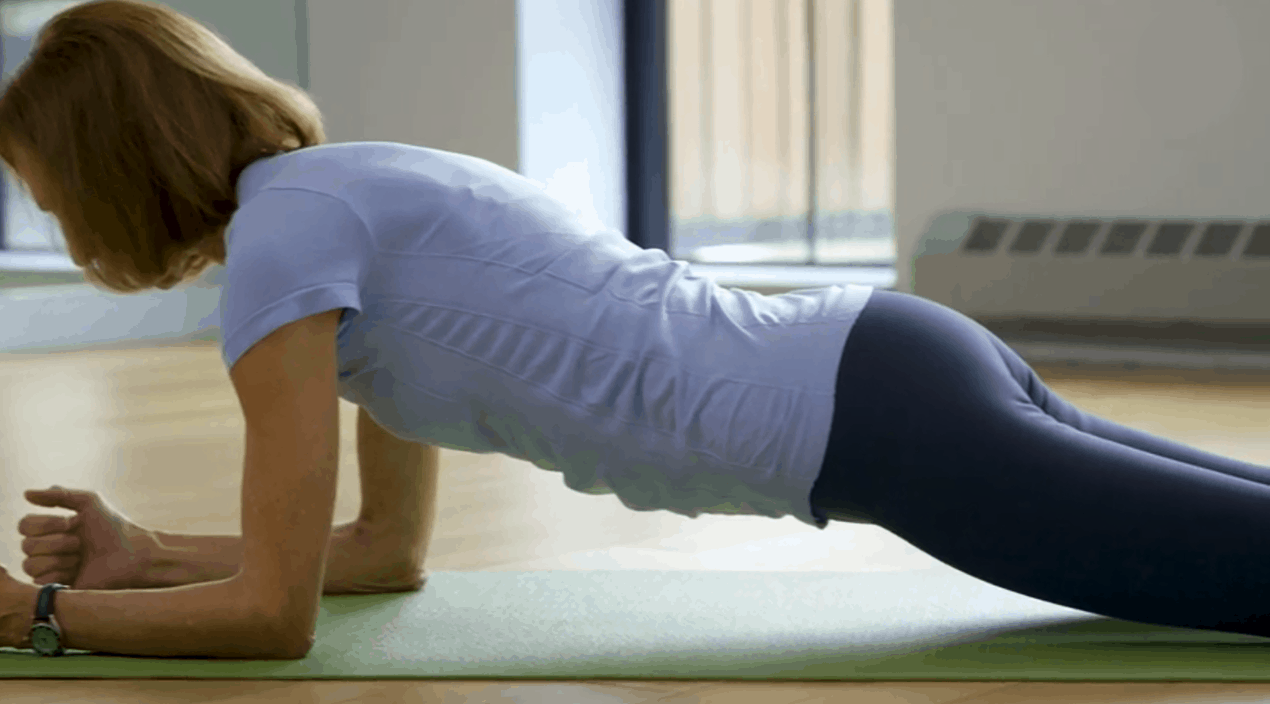
Step 1 - Start off by getting into a push-up position with your hands supporting you about shoulder width apart and toes resting on the floor.
If you can't do a push-up, start by doing the plank with your knees touching the ground.
Do not lift your buttocks up in this step.
Step 2 - Slowly, inhale and lift your upper body up while resting on your forearms. Keep your neck in line with the rest of your spine. Your pelvis should remain in a neutral position throughout this exercise.
Step 3 - Hold this pose for 10 seconds to start off with. Gradually increase time to 30 seconds or even more.
Pro Tip
If you are not strong enough to do this exercise with your forearms resting on the floor, place a cushion or towel under them instead. Ensure that you engage your rectus abdominis to keep your pelvis in a neutral position.
It is okay if you feel that your lower back is arching or sagging. This indicates that you are engaging your lower back muscles during this exercise.
However, ensure that the shoulders remain directly over the wrists with the shoulders and buttocks resting on the floor at all times
Suggested duration
Seniors should start off with very short durations for the modified plank. In the beginning, anything more than 10-seconds can potentially aggravate spinal health issues.
#2 - Seated Leg lifts
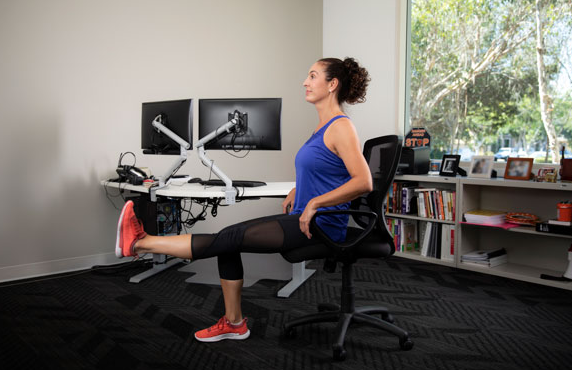
If mobility issues limit you from getting on the floor to perform a plank or a modified plank even, then seated leg lifts are a great way to build some core strength.
It's a very simple exercise that's performed seated on a chair.
It's as low impact and low key as you'd want it to be.
Muscles worked with seated leg lifts
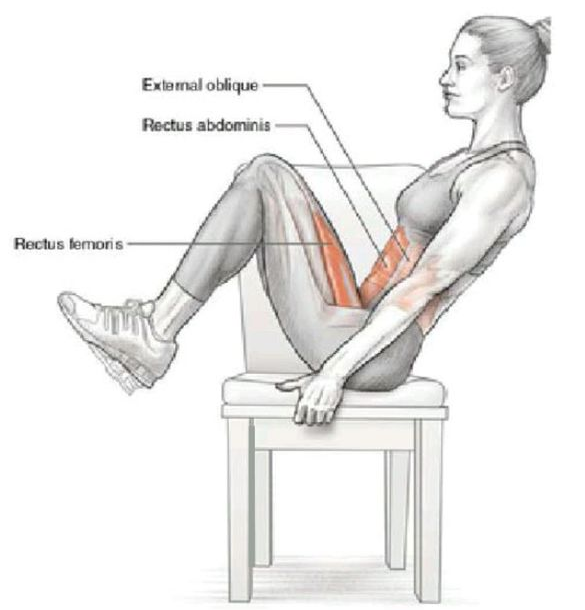
The seated leg lifts are not as complex as some of the other core exercises that I have listed. However, it does tick some of the key muscles required for core strength and stability.
These are the lower abs, the lower back, and the hip flexor muscles.
Lower Abdominal muscles
The lower abs also known as the iliopsoas muscles are responsible for stabilizing and moving the hips and lower spine.
It is basically a group of three muscles, the iliacus, psoas major and minor, and the rectus femoris. All three attach to the front part of your pelvis and also extend down toward your thighs.
The lower back muscles
Also known as the erector spinae, this group of muscles has three smaller parts - the longissimus, spinalis, and iliocostalis.
They are responsible for extending your spine when you are standing upright.
They also work to keep us balanced during walks and runs.
Hip Flexors
These are the muscles that allow you to bring your knee toward your chest as well as stabilizes the pelvis during functional movements.
Instructions on how to do seated leg lifts

Step 1 - Sit upright on a chair with both feet flat on the ground, about shoulder width apart.
Step 2 - Slowly, lift one leg up toward the chest while keeping the other foot flat on the ground.
Step 3 - Lower the leg and repeat with the other one.
Step 4 - Hold this pose for 10 seconds and gradually work your way up to 30 seconds or more for each leg.
Pro Tip
Ensure that you don't lean forward or arch your back while doing this exercise. Keep your belly button pulled in towards your spine for extra support.
Suggested Duration
This is an easy, low impact exercise. You can start off with 10 seconds and gradually work up to 30 second increments as you become stronger.
Diet Plan to follow while building core strength

The diet is probably the most neglected part of fitness. Everybody thinks that performing exercises will get them the body they yearn for.
True, exercise is undeniably important.
But, unless your body receives the nutrition and the fuel it needs to repair and renew, it's next to impossible to heal and strengthen muscle fiber.
Here are some tips to fix your dinner plates and make it more muscle-building friendly.
Up your protein intake
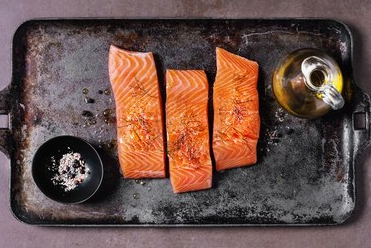
You don't have to eat a steak for every meal, but you do need to incorporate lean protein in your daily diet.
Protein is made up of amino acids which are the core building blocks of muscles. In order to help your body, build and repair muscle fibers after any form of exercise, you have to consume the right amount of protein.
The ideal amount of protein is widely debated.
So, I will not go beating around the bush here and parrot things that you probably know already.
Stick to about 2 grams of protein per kilogram of your body weight and you should be good to go. If you feel like you aren't getting enough of the good stuff out of your meals, then you can supplement with protein shakes.
These are convenient and tasty, and come in all types; from whey-free protein powders to creatine-free protein shakes, great tasting protein powders for smoothies, and even some safe protein powders for sensitive stomach too.
Your choice!
Hydrate

Did you know that 80% of our muscles are made up of water? Lack of fluids (water) in the body will cause the muscles to lose their firmness and also become weak.
A well-hydrated body is not only capable of doing more intense workouts, but it will also recover much faster after a tough workout session.
So yeah, remember to fill up your motivational water bottle every morning and bring it along.
Watch out for micronutrient deficiencies

Micronutrients are the vitamins and minerals that we all need in order to keep our bodies running efficiently.
Without them, it's like having a car without oil. It will eventually wear and break down.
So, if you want to build core strength and stability, then make sure you have no micronutrient deficiencies.
P.S. - You'd want to watch out for Vitamin D & your intake of Omega-3.
What has worked for me
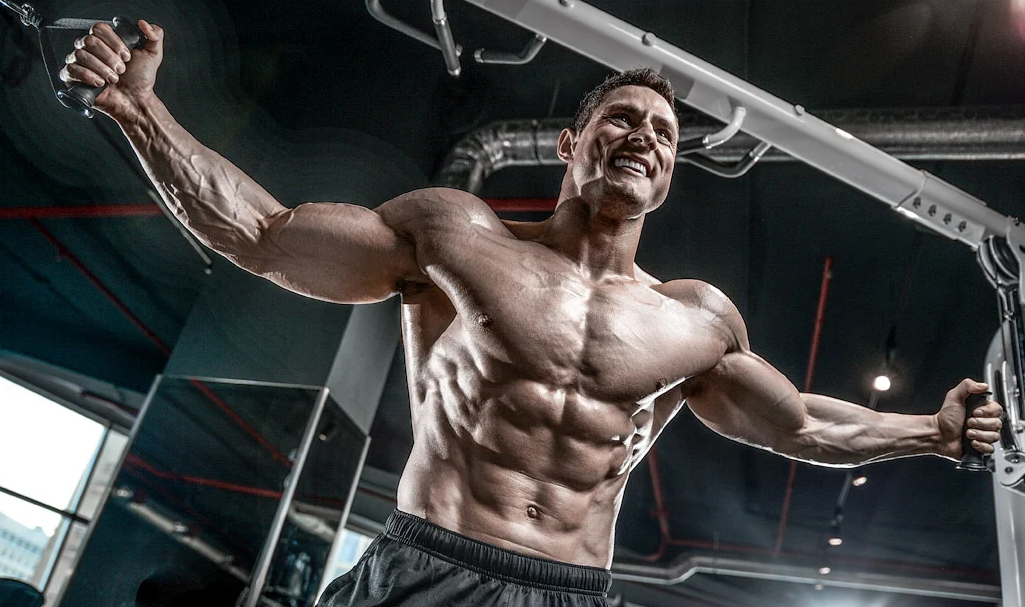
As I pull off gravity defying Calisthenics moves like the Human Flag, most people cannot believe that I struggled with postural problems caused by poor core strength at one point of time.
Oh yes, I practically built my core strength from nowhere.
I tried a ton of things.
A few of them worked.
Most didn't.
Here's what worked best for me.
Sticking to the basics
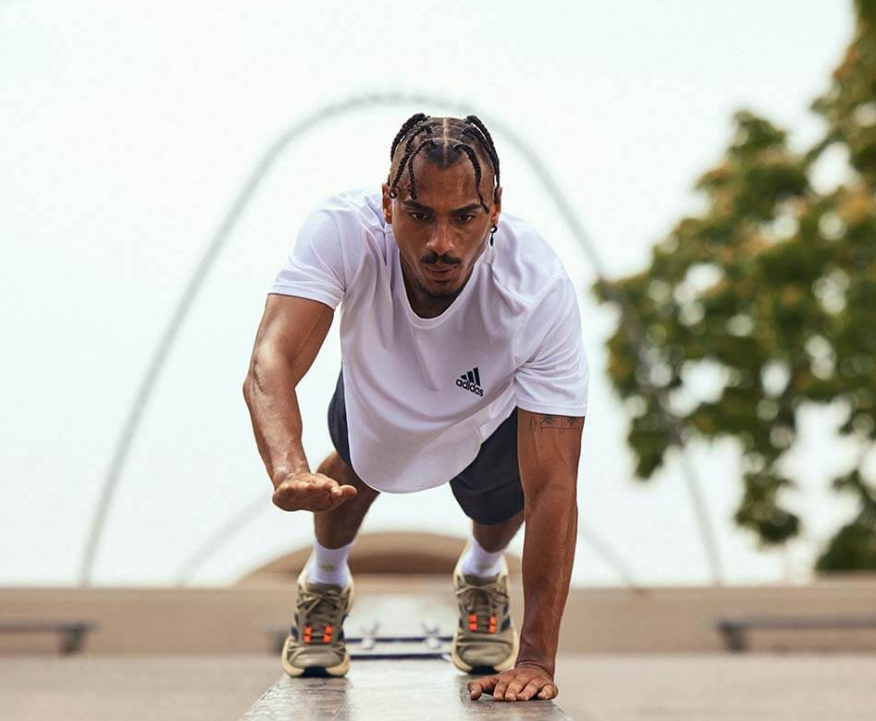
Core strength does not require fancy equipment or specialized guru techniques, heck, you don't even have to punish yourself doing 300 sit-ups a day, or nauseating 500 push ups a day to get there.
All it takes is patience and practice.
Unlike your biceps which looks pumped after two sets, the core is invisible. So there's definitely lack of instant gratification which limits the amount of time and effort that people invest towards it.
However, even if you do core exercises for 10 minutes a day, it will be the best 10 minutes you invest towards long term good health and pain free living.
Don't try anything fancy.
Just keep doing the basics until you can feel a difference in the way you move and do things around home.
Progressive resistance
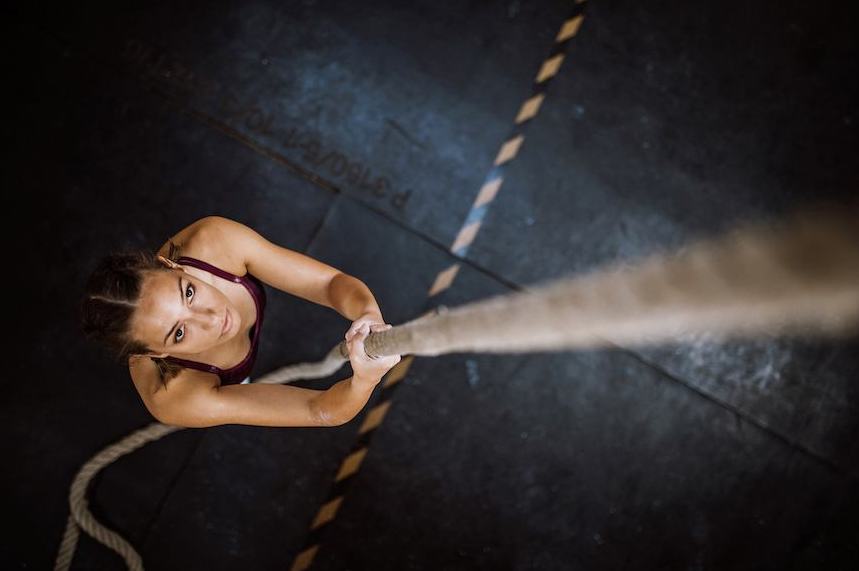
Just like any other muscle in your body, your core muscles will adapt fast to the stress that you subject them to. To be able to continue gaining strength, it is vital that you increase the resistance of the exercise gradually.
Luckily, you do not need to go around looking for equipment and tools to increase the resistance. Just add a few seconds to the time spent on each set that you currently do.
Good Nutrition

Fixing my diet has probably been the best thing that I did for my body.
Once you dial down into a solid nutritional strategy, you will be amazed at how your strength and energy levels skyrocket.
And yes, there are more than enough healthy foods for men out there to add to your menu as you ditch all the junk you've been indulging in.
So, first things first - ditch anything that's processed or packed with chemicals and trans fats.
Sugar goes the first.
Secondly, monitor your macros and micronutrient intake. Eat enough protein and healthy fats. Limit the carbs to complex carbs when possible.
Lastly, drink enough water.
Again, these are the basics. That's all that matters.
FAQ about building core strength from nothing
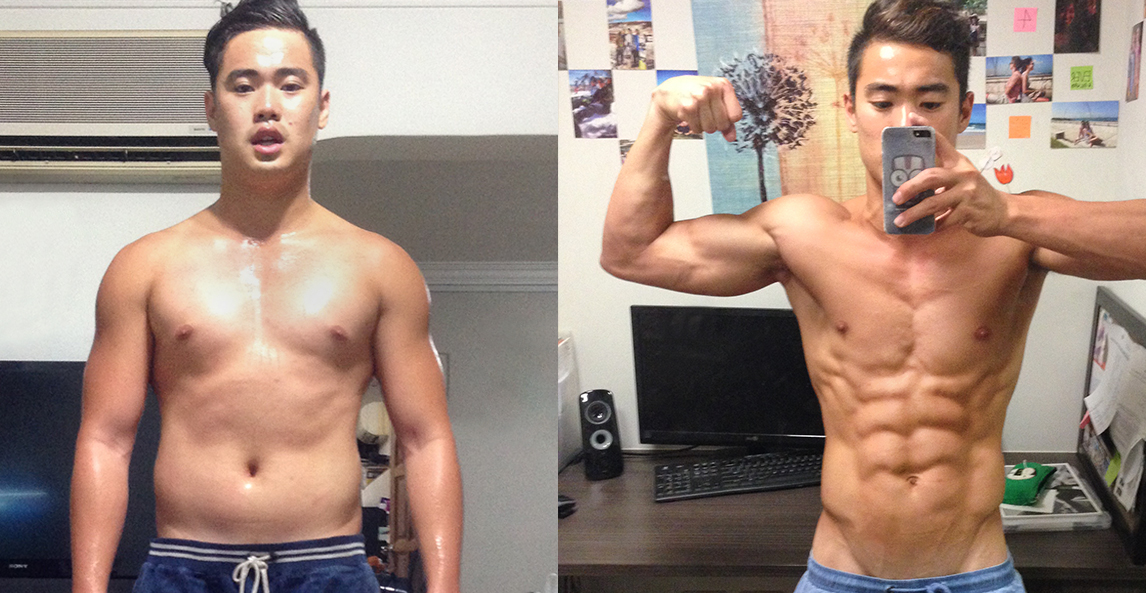
Now we answer a few more questions that might pop into your mind.
Q. What is the fastest way to strengthen your core?
A. In my opinion, progressive resistance is the fastest way to build core strength from nothing.
Just add about 10 seconds per set into your current workout routine and progressively try to push yourself with each passing day. It might be tough in the beginning. But you will eventually get there if you keep at it.
Q. How can I strengthen my weak core?
A. The best way to build a strong core is by doing traditional bodyweight exercises, which are the most basic moves. For instance, the plank, the bridge, the Russian twists and hanging leg raises recruit most core muscles.
Keep doing them until you gain enough strength in your core.
Q. Can you have a strong core without ABS?
A. You mean visible abs? Absolutely! It's a common misconception that having a strong core will make your abs show. You can have a strong core without any ABS showing at all. If you want to see them, then you'll need to lose body fat by eating right.
Take powerlifters for instance. They have insane core strength, but rarely have visible abs.
Q. How to build core strength with a bad back?
A. That's a tricky position to be in. A bad back can be caused due to poor core strength. But it can also limit your movement and trigger new aches and pains. So, you have to be very careful about what exercises you choose for a stronger core.
You need to work smarter, not harder in this scenario. I recommend that you speak to your coach or meet a trainer who's skilled in exercise and rehab.
Related Reading;
- Best Protein Pills of 2022
- The Best Low Sodium Protein Powders & Meal Replacements
- Why is Protein Powder so Expensive?
- Standing Oblique Crunches – How to, Benefits, Muscles worked, Alternative Exercises
- Cable Crunches – Ultimate Beginners Guide
- I Ended up Doing 1000 Pushups a Day
References:
- https://www.menshealth.com/uk/fitness/a34037742/best-core-exercises/
- https://www.self.com/gallery/core-exercises-top-trainers-swear-by
Ben Mayz
Hi there! I'm Ben, main author and chief editor at Fitlifefanatics.com. I have been obsessed with Strength Training and Fitness for 18 years now.
My passion for living a happy fit lifestyle is what made me realize that fitness is what I wanted for my future.
I went on to earn my Masters in Sports Training & Biomechanics.
My passion for Strength training & fitness and my love of helping others is what made me start Fitlifefanatics.
Here, myself, and a team of specialist aim to provide the most accurate, and actionable information possible in hopes to help foster the fitness community forward.
You can learn more about Fitlifefanatics on our About Page
